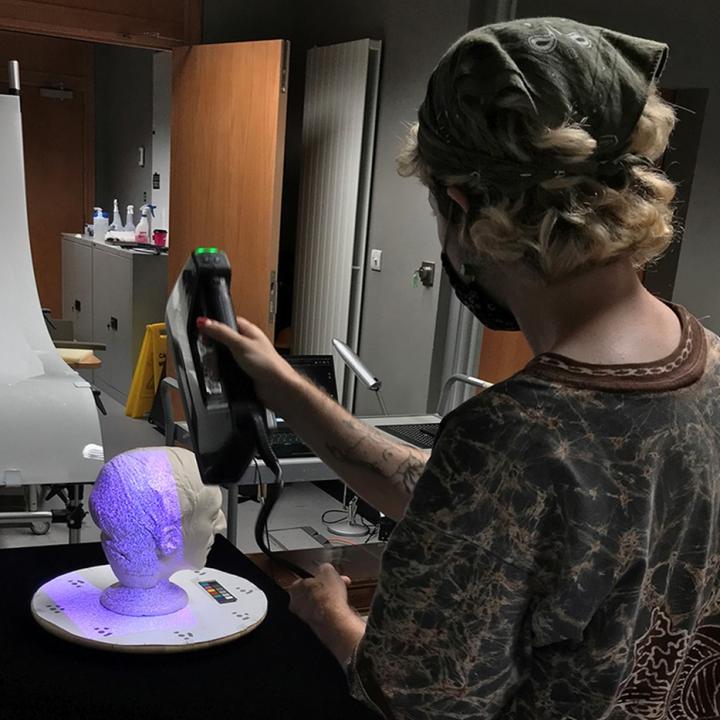Introducing a 3D Digitisation Service: Feasible or Fantasy?
This is an extract from Connor Wimblett’s Library blog “Introducing a 3D Digitisation Service: Feasible or Fantasy?”

The fantastic long read version of Connor's blog is available on the library blog.
For the past eleven weeks I’ve had the opportunity to intern with the Digital Imaging Unit, working on a project to evaluate the potential of establishing a 3D digitisation service within the department. “3D digitisation” in this sense encompasses everything from the initial production of digital models – using suitable items from across the University Collections – to online display, preservation of 3D data, and 3D printing. The project was roughly organised into three phases: research, testing, and implementation.
Phase 1: Research
In Phase 1, I carried out user research with curators and academics across the University Collections to assess the demand for a 3D service and decide which collections were suitable for 3D digitisation I also carried out external research, looking at how 3D technologies are being used by other educational and heritage institutions. It would probably be a stretch to call 3D the “Wild West” of the digital imaging world but, for now at least, there are no agreed standards for capture, preservation, or sharing of data.
Phase 2: Testing
In this phase I got the opportunity to go onsite for one week and work in the DIU photography studio with Susan, where we aimed to capture at least three objects using photogrammetry and structured light scanning.
Phase 3: Implementation
For this final phase, I produced a report summarising my research and recommending ways the Digital Library could support the implementation of a 3D service in the DIU going forward. I also processed the data we’d captured in the studio to produce a few 3D models which are now on the University’s Sketchfab page.
Final Thoughts
I found that following the process from research to implementation gave me a real appreciation for how involved a high-quality 3D service would need to be. But I also believe it’s an achievable service, which could benefit students, researchers, academics, and the public alike.
Connor Wimblett

